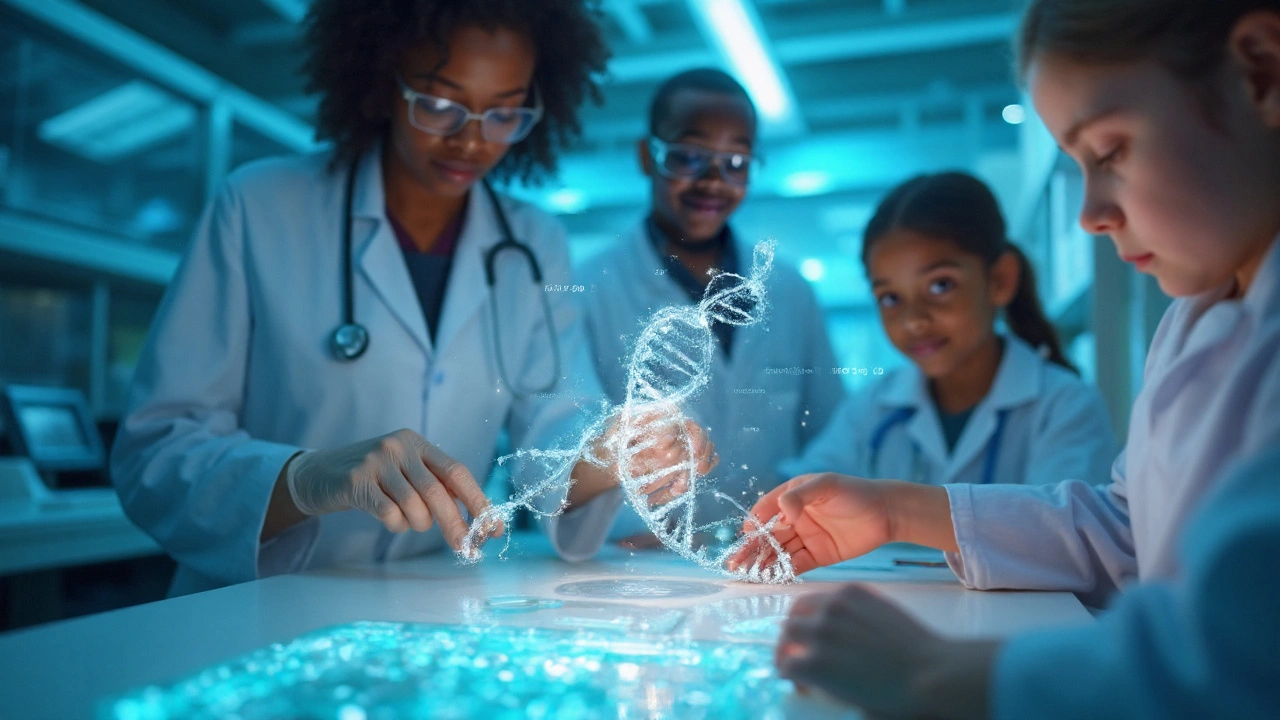Neuroblastoma: What Parents and Caregivers Need to Know
Neuroblastoma is a cancer that starts in nerve tissue, usually in children under five. It often begins in the adrenal glands but can grow along the spine. Knowing the basics helps you spot problems early.
Common Signs and Symptoms
Kids with neuroblastoma may have a lump under the skin that doesn’t hurt, unexplained weight loss, or a fever that won’t go away. Some experience abdominal pain, trouble breathing, or changes in eye movement if the tumor presses on nerves.
Because symptoms can look like a common infection, many families don’t realize something serious is happening until a doctor orders imaging. If you notice a firm, painless mass or persistent fatigue, ask for a scan.
What Causes Neuroblastoma?
Scientists haven’t found a single cause, but a few risk factors stand out. Some cases run in families, hinting at genetic clues. Exposure to certain chemicals before birth might raise the odds, though evidence is still thin.
Most children develop neuroblastoma without any clear trigger. That’s why routine check‑ups are crucial—early detection often changes the outlook.
Doctors diagnose neuroblastoma by combining a physical exam, imaging tests like ultrasound or MRI, and a biopsy to confirm cancer cells. Blood and urine tests can also reveal markers that point to the disease.
Staging tells the medical team how far the tumor has spread. Early‑stage neuroblastoma (stage 1‑2) stays localized, while stage 4 means it has traveled to distant organs like the bone marrow.
Treatment Options
Surgery is the frontline for localized tumors. Surgeons aim to remove as much of the growth as possible while preserving nearby organs. When the tumor is bigger or spread, chemotherapy shrinks it first.
Radiation therapy targets leftover cancer cells after surgery or when surgery isn’t an option. Newer approaches, such as immunotherapy and targeted drugs, focus on specific proteins that cancer cells need to survive.
High‑risk neuroblastoma often needs a mix of all three—surgery, chemo, and radiation—plus a stem cell transplant to rebuild the bone marrow after intense chemotherapy.
Clinical trials are constantly testing fresh ideas, like CAR‑T cell therapy, which teaches a patient’s own immune cells to attack the tumor. Asking your doctor about trial eligibility can open doors to cutting‑edge care.
Side effects vary. Kids may feel nauseous, lose hair, or get infections from weakened immunity. Supportive care—anti‑nausea meds, growth factors, and nutrition guidance—helps keep them as comfortable as possible.
Living With Neuroblastoma
Beyond medical treatment, families need emotional and practical support. Hospital social workers can arrange counseling, financial aid, and school accommodations.
Connecting with other parents through support groups offers a place to share tips, vent frustrations, and celebrate milestones. Knowing you’re not alone makes the journey less lonely.
Regular follow‑up appointments track the child’s recovery and catch any recurrence early. Blood tests, imaging, and physical exams become part of the routine for years after treatment.
While neuroblastoma can be aggressive, many children—especially those diagnosed early—survive and thrive. Advances in genetics and personalized medicine keep pushing survival rates higher every year.
Staying informed, asking questions, and leaning on a care team that includes doctors, nurses, and therapists give you the best chance to navigate this tough diagnosis with confidence.
How Neuroblastoma Links to Developmental Disorders: Genetics, Risks & Care
Explore the biological overlap between neuroblastoma and developmental disorders, focusing on shared genetics, early signs, and multidisciplinary care.
